Archived Article Detail
By Thomas P. Moore
WHAT’S NEW IN THE MINERAL WORLD ARCHIVE – posted on 8/28/2008
August 26, 2008
Today I am adding an update to the report of August 6 (below). There’s a major new fluorite discovery in South Africa to alert you to, and a (soon-to-be) major new mineral show as well.
During these past couple of years the market has seen small incursions of beautiful green fluorite specimens from a place in South Africa called “Riemvasmaak.” I now learn from Tom Gressman of Collector’s Edge (www.CollectorsEdge.com) that that worthy firm has recently acquired a batch of wonderful Riemvasmaak fluorites—the best seen so far—which will be available at the upcoming Denver Show. Riemvasmaak is a lightly populated region 56 km from Kakamas, bordering the Orange River to the south and Namibia to the west. Its volcanic landscape contains isolated mountains, plateaus and valleys, punctuated by hot springs. A number of pegmatite deposits are present, none with any history of producing significant mineral specimens save for the earlier trickles of fluorite. But in 2007 and 2008, superb clusters of octahedral fluorite crystals, some with quartz crystals, were dug, largely with hand tools, from a series of small surface pockets. The fluorite specimens range from thumbnail to large cabinet, with individual crystals reaching 12 cm on edge; best of all, these sharp octahedral crystals are of a green hue so vivid that “neon green” seems the appropriate term…see the picture here, showing a cabinet-size group. We’re in for a neon-green spectacle in the Collector’s Edge room at the Merchandise Mart in Denver.
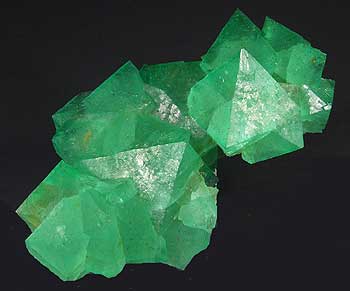
South Africa. Collector’s Edge specimen and photo.
New Zinn Expositions Southeast Show
Marty Zinn has just added a new event to his roster of “hotel” shows around the country; in fact, he has called into play a whole new region of the country, and southeastern mineral collectors are (by all accounts) mighty pleased. As to the basic facts of the matter, Marty himself writes: “The first annual Southeast Gem, Mineral and Fossil Show was held in Cartersville, Georgia on August 15, 16 and 17, 2008. Sixty-five vendors were located in the Holiday Inn-Cartersville, which is 45 miles north of Atlanta and 55 miles south of Chattanooga, Tennessee. Vendors offered mineral specimens, fossils, meteorites, gemstones, cabochons and many other related items. Attendance was impossible to count…but the halls seemed to be overflowing with visitors all day Friday and Saturday, and the visitors definitely were making purchases, as 55 of the 65 dealers have already signed up for 2009. The hotel almost ran out of parking spaces on Saturday!”
Perhaps the parking-space problem was partly owing to the symposium held on Saturday, with speakers including Bob Cook (amethyst from Jackson’s Crossroads), Ed Speer (hiddenite from North Carolina), Karen McGinn (diamonds), and Terry Huizing (his trip to the DeBeers facilities in Namibia). Future editions of the “Georgia Show” also are good bets to be intellectually (as well as commercially) stimulating, for the show will be supported in diverse ways by the Tellus Northwest Georgia Science Museum, currently under construction and scheduled to open in January 2009—this year the museum offered show dealers a “preview” show in its digital planetarium.
Marty observes with some bemusement that many Deep South residents are not especially inured to mineral shows of this sort: as he reports it, “Some local collectors were overwhelmed with the size and number of vendors [and] some of the visitors expressed being intimidated by going into a hotel room to shop for specimens.” Well, they’ll get used to it, and they’ll get used to the visiting Yankees who will start filtering in, beginning next year, for sure. You can find more details concerning the “Georgia Show” at www.mzexpos.com.
August 6, 2008
Midsummer dog days are now pressing downwards upon us like huge shaggy hounds (good-natured enough, but not fun to have on one’s lap)—and yet even now, when not only is the weather hot but also the action is slow in the mineral world, one may still repair to one’s air conditioning and troll comfortably through dealers’ websites, discovering minerals which most assuredly are not “dogs.” Let me tell you about a few.
New On The Web
Many polymetallic mines are active near the city of Nandan, in Nandan County, northern Guangxi Zhuang Autonomous Region, China—for an overview of the mining district, and many pretty pictures of specimens from it, consult Guanghua Liu’s book Fine Minerals of China (2006), available from the Bookstore on this site. In the summer of 2005 there was a limited find of superb axinite-(Fe) (formerly ferro-axinite) in an unspecified mine near Nandan, and a few miniature and small cabinet-size crystal groups appeared at the Denver Show of that year; the two dealers who had them gave different locality particulars (see the Denver report in the January-February 2006 issue). The axinite-(Fe) crystals, reaching 3 cm, are dark brown and sleekly lustrous, and are distinctive for showing unusual thickness—up to 1 cm—in contrast to the typically razor-edged axinite crystals from other localities. Now, a July 2008 update to the site of Dan Weinrich Minerals (www.danweinrich.com) shows some happy results of a new strike at this (still vaguely defined) locality: Dan offers loose crystal clusters from 4 to 9 cm across showing characteristically thick, slightly translucent, chestnut-brown axinite-(Fe) crystals to 3.5 cm, most of the clusters liberally spotted by sparkly little quartz crystals.
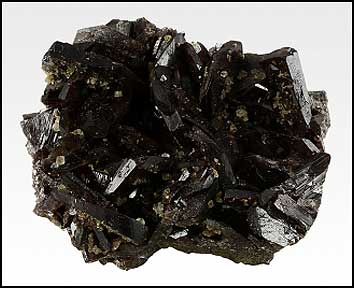
Dan Weinrich specimen and photo.
Together with Rob Lavinsky’s The Arkenstone (www.irocks.com) and a scattering of smaller dealerships here and there, Dan Weinrich also offers some highly attractive specimens from an early 2008 find of green (copper-rich) adamite on Level 6 of the San Juan Poniente lugar (collecting area) of the great and venerable Ojuela mine, Mapimí, Durango, Mexico. Cavities in the mine’s typical earthy brown “limonite” gossan are solidly lined with druses of lustrous, apple-green to somewhat darker green adamite, and premier specimens feature blocky, well individualized, translucent apple-green adamite crystals, some with curving surfaces, reaching 8 mm or so. Specimens also exist in which sheaves or sub-parallel fans of the vivid green adamite crystals stand up at varying angles from matrix. These new specimens, nearly all of the best of them thumbnails and miniatures, represent yet another beautiful incarnation of adamite from the Ojuela mine (which ancient locality has been stirring of late, encouragingly, after decades of relative fallowness).
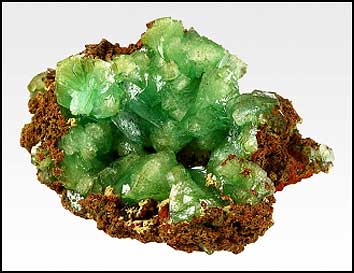
Dan Weinrich specimen and photo.
By contrast to the Ojuela mine, the Milpillas copper mine in the Cananea mining district of Sonora, Mexico is very new, though already plenty important to mineral collectors: an article scheduled for the November-December issue of the Mineralogical Record calls the locality a “contemporary classic.” Here on the web and in printed show reports I’ve already ventured descriptions of the world-class specimens of azurite and pseudomorphous malachite that the miners are finding regularly these days in igneous porphyry host rocks in upper parts of the mine. In mid-June 2008, from a large pocket zone, there came a bonanza of specimens of malachite pseudomorphous after azurite, with very sharp, velvety dark green, bladed pseudocrystals to 2.5 cm in clusters to an extraordinary 18 cm across. Two pages of these specimens, miniature-size and up, were posted on July 25 on the website of Rob Lavinsky’s The Arkenstone (www.irocks.com). Rob’s miniatures tend to have more out-thrusting crystals and thus busier configurations, but the great curved-plate clusters, with lower relief, are just as dramatic in their way. Surely this is not the last, or even necessarily the best, we shall see of gorgeous malachites (or azurites) from the Milpillas mine, but it’s tricky in several ways to get these specimens out and onto the market, and collectors thus are advised to choose their Milpillas “keepers” without too much dithering.
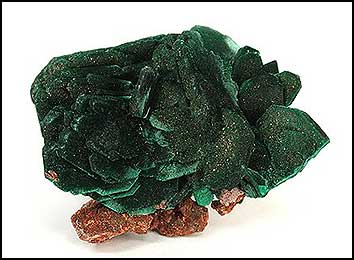
Upper specimen 4 cm; lower specimen 11 cm.
Arkenstone specimens and photos.
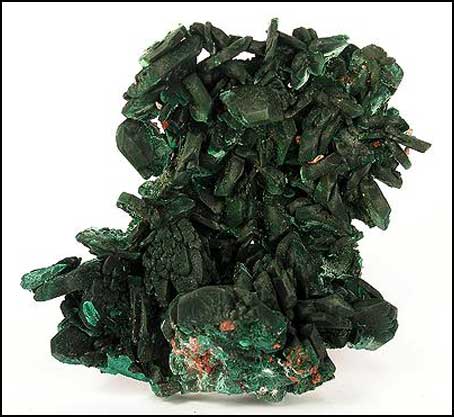
An exotic find from the first half of 2008 in one of the mines of Charcas, San Luis Potosí, keeps us in Mexico for one more paragraph. Fledgling Tucson dealer Marcus Origlieri (www.mineralspecies.com) has acquired a single flat of small specimens of the extremely rare hydrated hydrous calcium borate nifontovite; these 26 thumbnails and two small miniatures were found at Charcas sometime in the first half of 2008. All of the specimens are loose prismatic crystals with complex systems of terminal faces (but broken off where they had been attached to matrix), between 1.5 and 3.5 cm long. No associated species are present except for occasional patches and inclusions of an unidentified white, chalky substance and small, white matrix fragments. The nifontovite crystals are mirror-faced, highly lustrous, and absolutely colorless and transparent, suggesting machine-cut prisms of glass or of Plexiglass—but don’t worry, Marcus has employed RAMAN spectroscopy at the University of Arizona to verify them as nifontovite. If you are a faithful Mineralogical Record reader and “nifontovite” sounds familiar, you’re probably recalling the short article in July-August 2005 about Bill Pinch’s 5.5-cm specimen, at that time one of only two known significant crystal specimens of the species, and surely (still) the world’s best extant one. The Pinch specimen has lately gone to the Smithsonian, but now you might be able actually to score a nifontovite thumbnail for yourself, and to mystify your friends with the “Okay, what is it?” question. The crystals have yet to appear on Marcus’s website, but probably will do so soon.
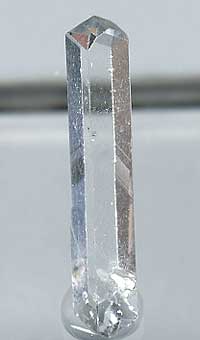
Thomas Moore specimen and photo.
In his July 3 update, Mike Keim of Marin Minerals (www.marinmineral.com) offers four beautiful crystals of zircon from a locality that’s unfamiliar to me and that I can’t find in any reference work ready to hand: Mashewa, Tanga Region, Tanzania. The zircon crystals are floaters, all four of them very sharp and two doubly terminated, having good luster and a rich dark brownish red color; they are gemmy, too, though displaying extensive internal fractures. The crystals range in length from 2 to 3.7 cm.
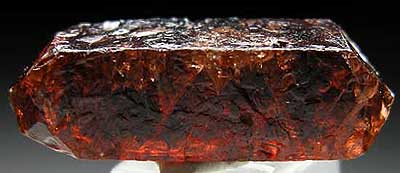
Mike Keim specimen and photo.
I’ve pointed fellow web-browsers before to the site of Kiyoshi Kiikuni’s Key’s Mineral Collection (www.keysminerals.com), where nice selections of fluorite (Kiyoshi’s favorite species) and intriguing arrays of one-of-a-kind specimens are frequently to be found. Two one-of-a-kinders shown in “Volume 3” of the “Worldwide Minerals” July 27 update on the site are now presented for your viewing pleasure (and, in one of the cases, for someone’s knowledgeable commentary). First, there’s the best little specimen I’ve ever seen of vanadinite from the old Apex mine, San Carlos, Chihuahua, Mexico—and I’ve seen a lot lately (in pictures at least), as I’ve just finished writing an article on the locality. These very distinctive vanadinites, commonly in association with white calcite crystals, began appearing on mineral markets in the 1950s and have never quite disappeared, although they’ve always been elusive. Kiyoshi’s crystal is 3 cm long and displays superbly the typical hoppered form and lively orange color of the vanadinite of this mine.
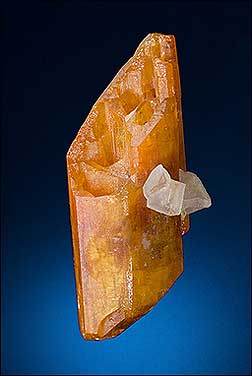
Kiyoshi Kiikuni specimen and photo.
Also posted as one of the “Worldwide Minerals” on the Key’s Mineral Collection website is a 6.5-cm matrix of fine-grained clayey material with crystals of “beta-quartz” resting lightly on it; the silky, tan-colored bipyramids of what presumably is a high-temperature quartz polymorph reach 9 mm, and are as crisp as if carefully carved from old ivory. The given locality is simply “Dominican Republic.” I’ve seen these specimens once or twice, but have never seen them cited in any reference, nor have I seen any precise locality attribution for them. Apparently I’m not alone in my puzzlement: Kiyoshi writes “I have a favor to ask you all. I have a beta-quartz from the Dominican Republic, but don’t know the detailed locality. If you have any information about it please let me know. Thank you.” And please let me know too. Thank you.
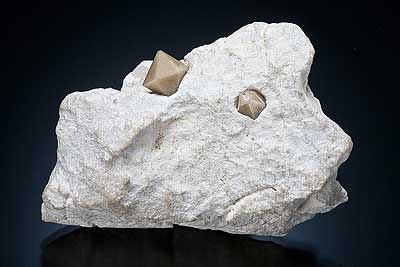
Kiyoshi Kiikuni specimen and photo.
Cornwall & Devon Minerals (www.cornwalldevonmineralspecimens.co.uk) is an interesting British site with selections of old and contemporary specimens from (just like the man said) Cornwall and Devon. From the June 28 update of the Cornwall section, here’s a terrific old bournonite from the classic, long-defunct Herodsfoot mine, showing brilliantly metallic black, undamaged, individual bournonite “cogwheels” to 1 cm. The size of the piece is 2 × 2.5 cm (on the site it is called a “miniature” but here in America—say for example if it were in my collection—it would be called a thumbnail), and its price is € 145 ( = $286.49), and it even comes with an old Sir Arthur Russell label. Well, unfortunately it is marked “Reserved.”
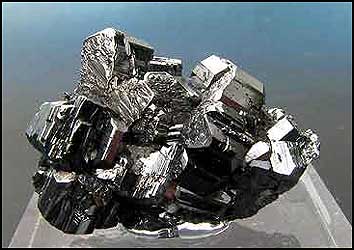
Cornwall and Devon Minerals specimen and photo.
Not all specimens on this site are such very good deals, of course, but many are fine old English classics, and highly instructive: check out, for example, the 7.5-cm cluster of frosty white, splintery cerussite crystals to 1.5 cm, not from the Flux mine in Arizona but from recent dump finds at the Pentire Glaze mine, Padstow, Cornwall, where commercial mining ceased in 1857.
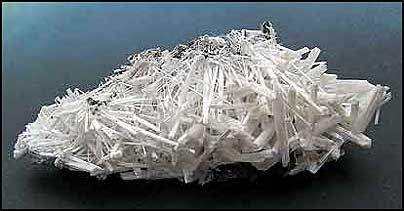
Cornwall & Devon Minerals specimen and photo.
Back to China now. For several years we have known of the excellent helvite crystals which sometimes are found at the Tongbei, Fujian Province locality for spessartine/orthoclase/smoky quartz, and lately the quality of the helvite specimens being found has improved dramatically, so that probably they now deserve to be called the world’s best representatives of the species. Earlier specimens show sharp helvite tetrahedrons of a pleasant orange-brown hue, but looking rather corroded. Now, though, considerably more lustrous, as well as more deeply colored, tetrahedral crystals to 2.5 cm are coming out; they are more orange-red than orange-brown, and some are even gemmy in small areas. Associations include the usual smoky quartz, feldspar, and spessartine crystals, and more rarely fluorite and pyrite crystals. Wendell Wilson recently has excluded himself and all his heirs from my will by scoring, right under my nose, a wonderful Tongbei helvite thumbnail, with a single, large, brightly lustrous crystal perched up on matrix—this from the trusty China Minerals site (www.china-mineral.cn) whose proprietor, Mr. Chen, conducts specimen-mining at Tongbei. However, there is an Italian dealership (and new member of our Internet Directory) called Your Mineral Collection (www.yourmineralcollection.com) which apparently has just scored a helvite coup, for an update of July 1 displays 14 excellent pieces from a “new find” at Tongbei. These matrix specimens are thumbnail through cabinet-size, but the real winners (I say quite objectively) are the thumbnails, which show bright, very sharp, in some cases penetration-twinned, part-gemmy helvite crystals to 1 cm. The specimen pictured here, like many of the other thumbnails, was already sold when I came upon it…but given the size of the occurrence (see Berthold Ottens’ article in January-February 2005) and the zealousness of the ongoing digging, it’s reasonable to expect further good helvite news from Tongbei.
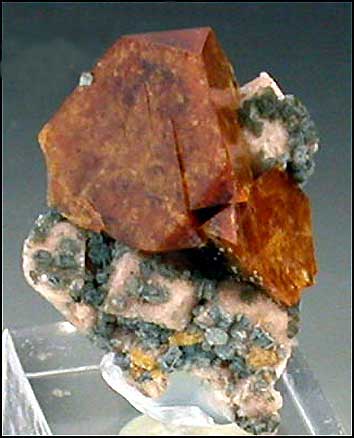
Your Mineral Collection specimen and photo.
A small number of very fine specimens of the rare Pb-Al phosphate plumbogummite was found in early 2005 at the Yangshuo lead-zinc mine, Guangxi Zhuang Autonomous Region; the specimens reached the Ste.-Marie-aux-Mines and Munich Shows in that year, and more have shown up occasionally on the web. The Yangshuo mine is one of two sub-localities (actually, two mine adits entering the same orebody) which turned out the fabulous Chinese pyromorphites of the early 2000s; the other sub-locality, the Daoping mine, lies on the other side of well-mineralized Mt. Haiyang and in a different county. Although, inevitably, they’ve been much overshadowed by the pyromorphites of Daoping and Yangshuo, the plumbogummite specimens, found exclusively in the Yangshuo adit, are matched for quality worldwide only by some old English specimens from Caldbeck Fells, Cumbria. Like their English forefathers the Yangshuo specimens show lustrous coatings of botryoidal, translucent blue-green plumbogummite on matrix, with broken “fingers” and botryoids revealing yellow cores of relict mimetite. Now, the Czech web dealership Rockshop.cz-Kalat Minerals (www.rockshop.cz) offers about 15 very nice specimens of Chinese plumbogummite, from thumbnail to small-cabinet size, and I’d say they are excellent buys, not only for the rare-species specialist but for the rest of us too, as they are truly attractive examples of a rare, two-locality mineral.
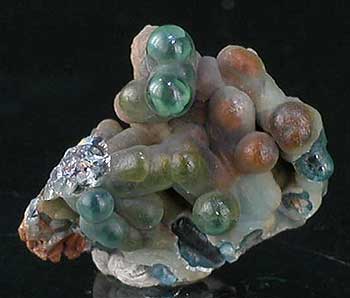
China. Rockshop.cz specimen and photo.
A Correction
Finally, a correction, courtesy of French mineralogist Georges Favreau, senior author of our recent Bou Azzer issue. Georges—a Morroco-minerals expert if ever there was one—has written to say that the “chlorargyrite” from the Imiter mine, Morocco, on which I reported in the July 21, 2007 installment of this column, is in truth not chlorargyrite at all, but mimetite. The dealer(s) who handled this material must have neglected to perform the (easy) needle test for chlorargyrite, one of the sectile “horn silvers.” Georges took out some of the first known mimetite specimens from the Imiter mine, and has written about the material in the newsletter of the French micromounters’ association, and he advises you to change your labels if you have acquired one of these “chlorargyrite” specimens.
With that, I say goodby to you for the second half of the summer. Oh, I may have a late-summer update, an addendum, an afterthought, or two, to stick onto this report, but basically my mineralogical near-term future looks very much like Denver, as, I imagine, yours might too.
For questions about this column, please email Tom Moore.
